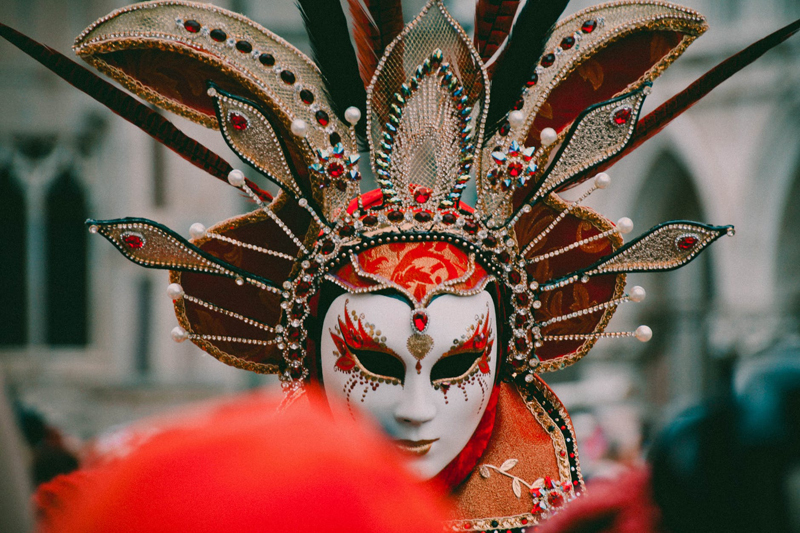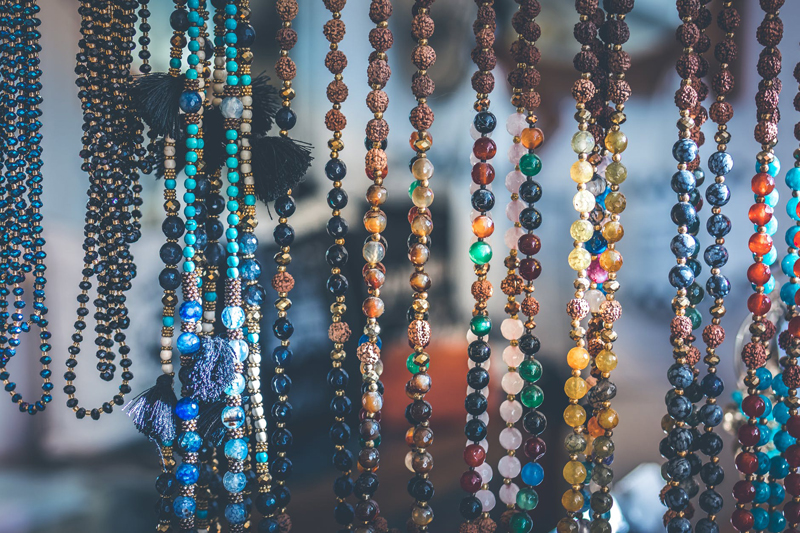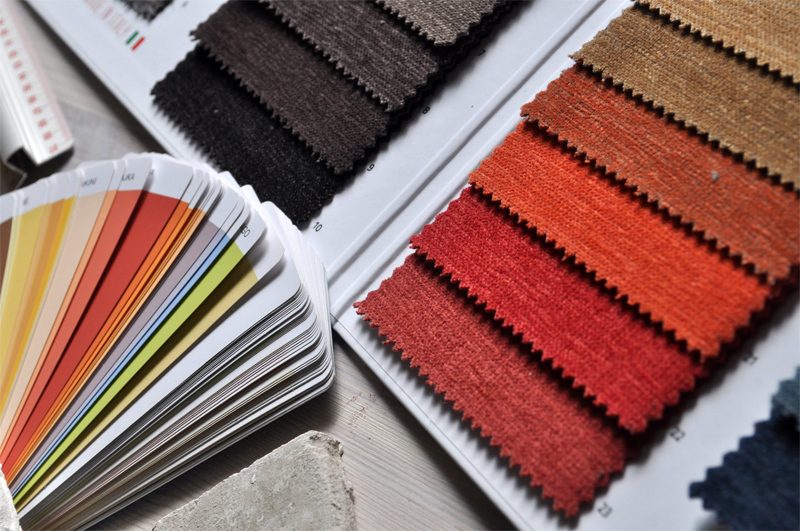How Much Embellishment Should You Use

There's an old saying, a little goes a long way. And there's another saying, "nothing exceeds like excess". When it comes to embellishing your costumes, how do you know when you've done enough? And how do you know what's the right kind of embellishing?
Consider Your Audience: How far away will they be?
Will the audience see the costume in person, in the theater or on film? This is a very important consideration because embellishment helps the audience "read" what's going on from far away.
In a theater--If you're in a theater you should know how far back a costume needs to read. In other words, how far away will the farthest audience member be seated? The farther back the audience, the more bold your embellishments need to be. Bright, high-contrast colors are important here. As are light-reflecting surfaces like metal, sequin and rhinestones (if these are suitable to the character.) Small intricate details will be completely lost in a big theater. You should aim for large simple shapes. The farther away the audience, the more exaggerated you should get.
In person--If the audience will see the costume close-up, like say at a Renaissance festival, you want to aim for small delicate embellishments. Large ones will make the costume seem amateurish and comical. Try to make the costume look like regular clothing in terms of the scale of embellishment. That doesn't mean you can't make the costume look lavish, just keep the scale in check. Use smaller motifs that won't look ridiculous if the audience member is just a few feet away.
On film--Film or video is a special case because the costume will be subjected to extreme close-ups and you don't want the clothing to overpower the wearer. This is especially true with high-definition technology. I'm sure you've seen high-def programming where you could see every pore in the actor's face. Your embellishments will be subject to the same scrutiny.
Tiny delicate details are called for here. Embroidery, lace, beadwork, embellished trims are great. When in doubt, make a small sample of your idea, put it up to the neck or arm of a person, then video that person close-up. Watch it on a computer monitor. Does the sample scream out at you, or does it look natural on the person? Aim for natural.
Consider Your Character: A Medieval peasant will need less embellishing than a king, and different sorts.
A kingly robe for a theater production will need depth and texture to display luxury through the costume. Layers of embellishment are needed here. First lay down something padded like fur (fake or otherwise) or felt or use thick velvet for the robe. Then you might lay in some wide trim. Finally, you could put rows of sequins or dot gems here and there. Layers provide depth when you sew them down into the base garment. You want different heights of embellishment to provide shadows when lit. So, pile them on.
A peasant doesn't need as many layers. You want to portray thinness, scarcity, so one thin base layer for the garment and then a single embellishment like leather stitching on the seams is enough.
Of course, there are always exceptions to every rule. But if you keep these things in mind when designing your costume--whether it's for stage, screen or something else--your embellishments will enhance rather than detract.
One of my favorite ways to embellish costumes with high texture and color contrast is machine needle felting. It's a simple technique you can do by hand or machine to make beautiful appliques or entire outfits. Needle felting works with wool, silk, mylar strands, lots of different materials. You can read more about this beautiful textile technique here.
Consider Your Audience: How far away will they be?
Will the audience see the costume in person, in the theater or on film? This is a very important consideration because embellishment helps the audience "read" what's going on from far away.
In a theater--If you're in a theater you should know how far back a costume needs to read. In other words, how far away will the farthest audience member be seated? The farther back the audience, the more bold your embellishments need to be. Bright, high-contrast colors are important here. As are light-reflecting surfaces like metal, sequin and rhinestones (if these are suitable to the character.) Small intricate details will be completely lost in a big theater. You should aim for large simple shapes. The farther away the audience, the more exaggerated you should get.
In person--If the audience will see the costume close-up, like say at a Renaissance festival, you want to aim for small delicate embellishments. Large ones will make the costume seem amateurish and comical. Try to make the costume look like regular clothing in terms of the scale of embellishment. That doesn't mean you can't make the costume look lavish, just keep the scale in check. Use smaller motifs that won't look ridiculous if the audience member is just a few feet away.
On film--Film or video is a special case because the costume will be subjected to extreme close-ups and you don't want the clothing to overpower the wearer. This is especially true with high-definition technology. I'm sure you've seen high-def programming where you could see every pore in the actor's face. Your embellishments will be subject to the same scrutiny.
Tiny delicate details are called for here. Embroidery, lace, beadwork, embellished trims are great. When in doubt, make a small sample of your idea, put it up to the neck or arm of a person, then video that person close-up. Watch it on a computer monitor. Does the sample scream out at you, or does it look natural on the person? Aim for natural.
Consider Your Character: A Medieval peasant will need less embellishing than a king, and different sorts.
A kingly robe for a theater production will need depth and texture to display luxury through the costume. Layers of embellishment are needed here. First lay down something padded like fur (fake or otherwise) or felt or use thick velvet for the robe. Then you might lay in some wide trim. Finally, you could put rows of sequins or dot gems here and there. Layers provide depth when you sew them down into the base garment. You want different heights of embellishment to provide shadows when lit. So, pile them on.
A peasant doesn't need as many layers. You want to portray thinness, scarcity, so one thin base layer for the garment and then a single embellishment like leather stitching on the seams is enough.
Of course, there are always exceptions to every rule. But if you keep these things in mind when designing your costume--whether it's for stage, screen or something else--your embellishments will enhance rather than detract.
One of my favorite ways to embellish costumes with high texture and color contrast is machine needle felting. It's a simple technique you can do by hand or machine to make beautiful appliques or entire outfits. Needle felting works with wool, silk, mylar strands, lots of different materials. You can read more about this beautiful textile technique here.

Related Articles
Editor's Picks Articles
Top Ten Articles
Previous Features
Site Map
Content copyright © 2023 by Julie Anne Eason. All rights reserved.
This content was written by Julie Anne Eason. If you wish to use this content in any manner, you need written permission. Contact Brandi Ford for details.





